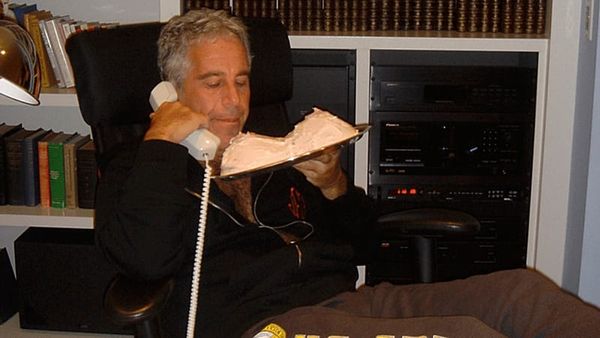
World Heritage status for Runanga’s historic workers’ hall could help put the West Coast town on the map, if the bureaucratic hurdles can be overcome
It’s an icon of labour-movement history that’s now a shabby shadow of its former self.
But the storied Runanga Miners’ Hall on the South Island’s West Coast is up for potential recognition as a Unesco World Heritage site.
Danish authorities have invited the trust that owns the 1937 building to nominate it for coveted international heritage status as one of the few workers’ halls around the world still standing.
Local volunteers who make up the trust have been slogging away for eight years to save the iconic building, which came close to demolition in 2014 after a cyclone ripped off half the roof.
Member Paul Thomas says the trust had to battle the Grey District Council to save the hall and faced initial scepticism from locals who’d have preferred a shiny new one.
World Heritage status would not only vindicate the trust’s efforts but would be a game changer for fundraising and for Runanga itself, Thomas reckons.
“It would put the town on the map and bring in visitors and be recognition at last of the significant role this place played in New Zealand history,” Thomas says.
Fiery history
The huge building, with its colourful pro-worker slogans and mock-Georgian facade, was erected by miners and local businesses in nine months after fire destroyed the original hall that was built in 1908.
Built of locally milled native timbers and seating 700, it was opened to public acclaim by firebrand mining union leader Bob Semple, later to become Minister of Works in the first Labour government.

The building – often described as the birthplace of the New Zealand labour movement - became the heart and hub of the Runanga community for the next 70 years.
The town itself was built to house workers at New Zealand’s first state coal mines nearby.
The hall, with its union offices, library, projector booth and meeting rooms, was the place where the miners met and organised and where their families socialised.
It was Runanga miners, better paid than their comrades in the private mines, who backed the country’s first strike up the road at Blackball, where union leader Pat Hickey was sacked for refusing to finish his pie in the regulation 15-minute lunch break.
The miners held out for three months before the company caved and agreed to a half-hour lunch and an eight-hour day.
End of an era
The strike dealt a death blow to New Zealand’s then compulsory arbitration system, launching the era of direct negotiations with employers, with the right to strike.
And under the barrel-vault ceiling of the Runanga Miners’ Hall, the constitution of the Federation of Labour was drawn up, pulling together the miners’ and other unions.
Restoring the hall and preserving its history has become an obsession, Thomas freely admits, costing the heritage buff two relationships over the eight years.
“You have to be obsessed to get this sort of thing done and it’s time-consuming and hard work finding the money. So far, it’s cost us just over $1 million to get the basics sorted, but we’re going to need another $2-3 million to finish the job.”
The trust’s vision for the hall is to revamp the interior to seat 300, restore the distinctive mezzanine floor and divide the space beneath into smaller meeting rooms, a gallery and offices.
The final phase involves resurrecting the lean-to that used to accommodate dressing rooms and toilets and turning it into a cafe.
Funding so far has come from insurance, the Lottery Grants Board and the former Provincial Growth Fund.
Deserved recognition
Although the hall has a Heritage NZ Category 1 listing, gaining World Heritage status would demonstrate the worth of the project to more funders, Thomas says.
But the process is tortuous, and the trust’s hopes could yet be dashed by a sluggish bureaucracy.

Trust member Jo Hart says to be included on the Unesco list proposed by Denmark’s Workers Museum, the hall must first be added to New Zealand’s own list of proposed World Heritage sites, administered by the Department of Conservation.
“DoC has a long list of ‘tentative’ sites that hasn’t been reviewed since 2007. And no one seems to know exactly how to add a new site to that list. It’s an absolute quagmire.”
Paul Mahoney, a DoC heritage adviser, says the process is also expensive.
“Overseas experience is that running the entire Unesco nomination process for a site has a minimum cost of $500,000, but is typically much more, and it usually takes three to five years.”
But there may be a faster way through the thicket of officialdom, he suggests.
“Personally, I like a bit of speed, and one option New Zealand has more control over is National Heritage Landmark status. I would recommend going for that as a first step.
“It would make it easier to get the hall listed on the New Zealand tentative list and faster to prepare a Unesco nomination.”
Made with the support of the Public Interest Journalism Fund
The tactic would also give the hall New Zealand’s highest heritage rating, which would be good for overseas and domestic marketing and attracting heritage funding, Mahoney says.
Piece of history
Thomas, Hart and their fellow volunteers are hoping Mahoney’s right.
“It’s not just a hall,” Thomas says.
“It’s where history was made that shaped this country politically and socially and industrially. And even if you personally don’t find that history palatable, it’s still part of who we are and how we got here.
“It’s not just school children who need to know their Aotearoa history, it’s all of us.”








